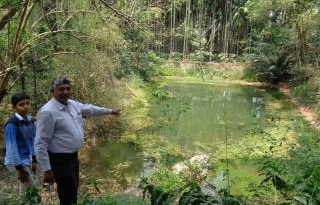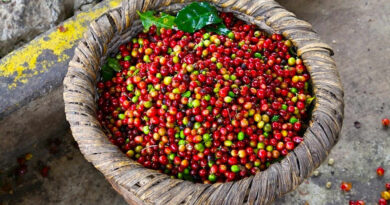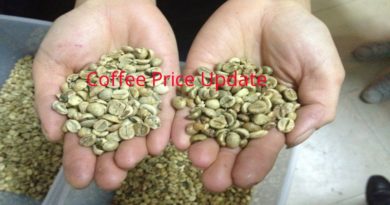Arabica Harvest starts: No Crop and Low Prices Worries Growers
Arabica,milder and premium coffee variety,harvest starts in Karnataka and Tamilnadu,but growers were devasted with poor crops and low Farm gate prices.
South-West monsoon in August this year impacted the crop in the key producing regions of Kodagu, Chikmagalur and Hassan in Karnataka, which accounts for 70 per cent of India’s coffee crop.
The Coffee Board has pegged the crop loss at 82,000 tonnes for the crop year 2018-19 starting October on account of the incessant South-West monsoon rains that lashed the key growing regions in Karnataka, Kerala and Tamil Nadu during recent months.
Production during 2018-19 stood at 3.16 lakh tonnes.
Bumper crop in Vietnam and Brazil
A bumper harvest in large producing countries such as Brazil, Colombia and Vietnam pushed coffee prices to 12-year lows, influencing the domestic prices here. Farm gate prices for arabica parchment are hovering at ₹6,500-7,000 per 50 kg bag, lower than last year.
“We are aligned to the Coffee Board’s crop loss estimate of 82,000 tonnes. The picking has just started. We will get a clearer picture on the crop size by middle of December,” said M B Ganapathy, chairman, Karnataka Planters Association.
Further, the KPA chairman said the current coffee prices are not sustainable for the growers as they are below the cost of production, which has been going up. With a glut in the international market, the prices may not see any improvement, going forward, he said.
Lower crop size hurts coffee exports
Coffee Exports have also slowed down on account of the lower crop in the previous year.
Ramesh Rajah, President of the Coffee Exporters Association said – “We expect that shipments may gain momentum in the first quarter of calendar 2019,”
There may not be a big growth in exports next year as there’s not much inventory left with the growers or trade. Already, Indian coffee exports have slowed down in the current calendar year (see table) owing to lower crop last year. While the green coffee exports have witnessed a decline, the shipments are largely sustained by the re-exports or instant coffees.
“The carry-forward stocks look minimal. We cannot expect a big jump in exports next year. Exports may be on par or could be marginally lower than current year,” Rajah said.
Further, Rajah said the Indian exporters are facing competition from major producers, who are aggressively selling in the international market. “Things don’t look bright for the next six months at least,” he added.
The weakening of the rupee against the dollar has helped the exporters to some extent. However, the currencies of competitors such as Vietnam and Brazil have also weakened against the dollar, helping them to price their coffees attractively. This has blunted the currency advantage for the Indian exporters to an extent, resulting in wafer-thin margins, Rajah said.
The exporters body sees a 15-20 per cent decline in total coffee output at around 3-3.1 lakh tonnes from the initially estimated 3.6-3.7 lakh tonnes. “We expect the Arabicas to be around 90,000 tonnes and Robustas at around 2,20,000 tonnes.”



